We have much more to do and your continued support is needed now more than ever.
Survival of the Coolest
How Animals Survive Winter
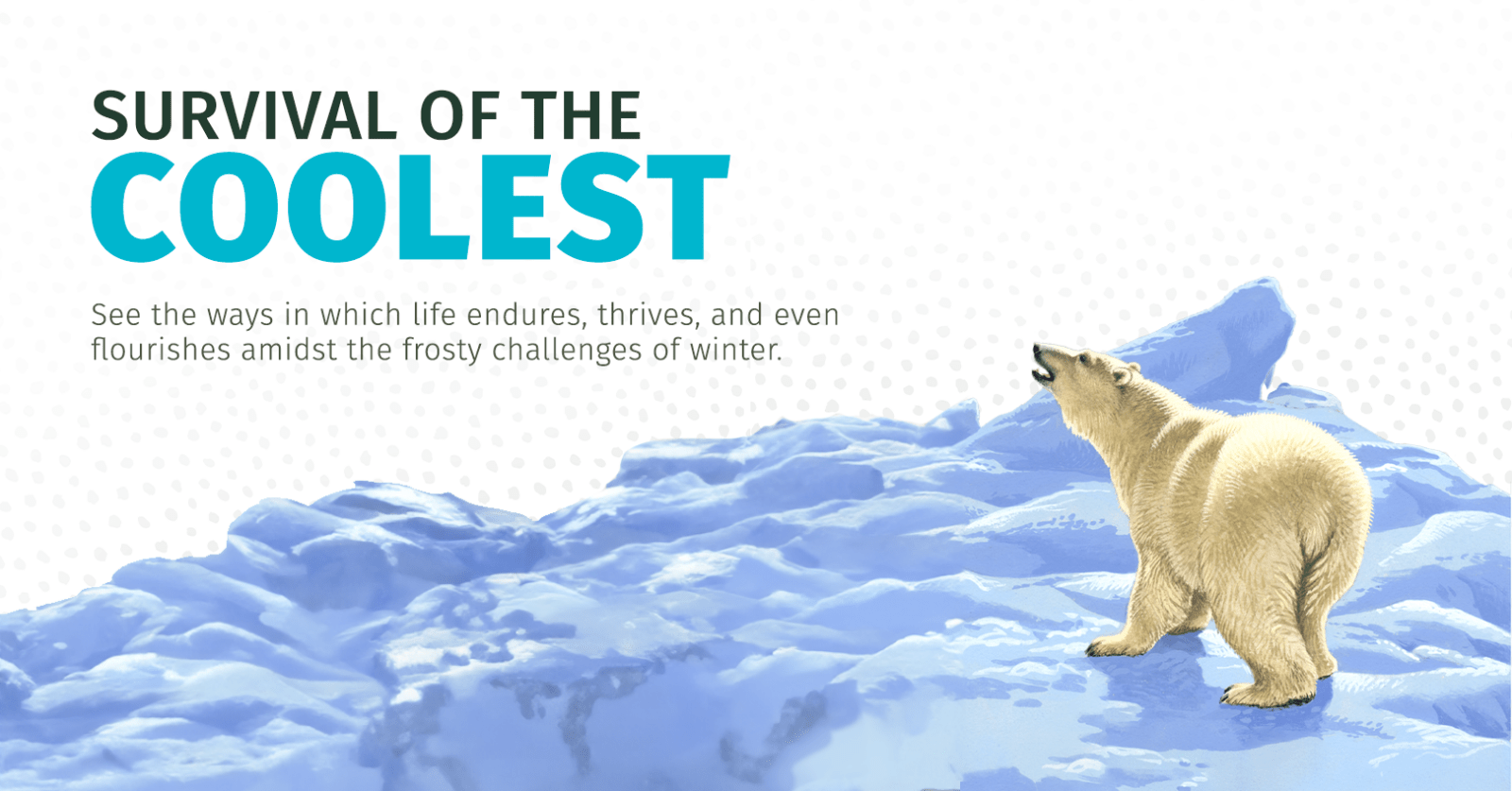
It’s easy to think of winter as a time of stillness and dormancy, a period when life retreats, awaiting the thaw of spring. But for the inhabitants of the natural world, winter is not a quiet retreat; it is a dynamic arena of endurance, strategy, and adaptability. From epic migrations that span continents to the creation of biological antifreeze, join us as we explore seven of the miraculous ways in which life endures, thrives, and even flourishes amidst the frosty challenges of winter.
Migration: Escaping the Cold
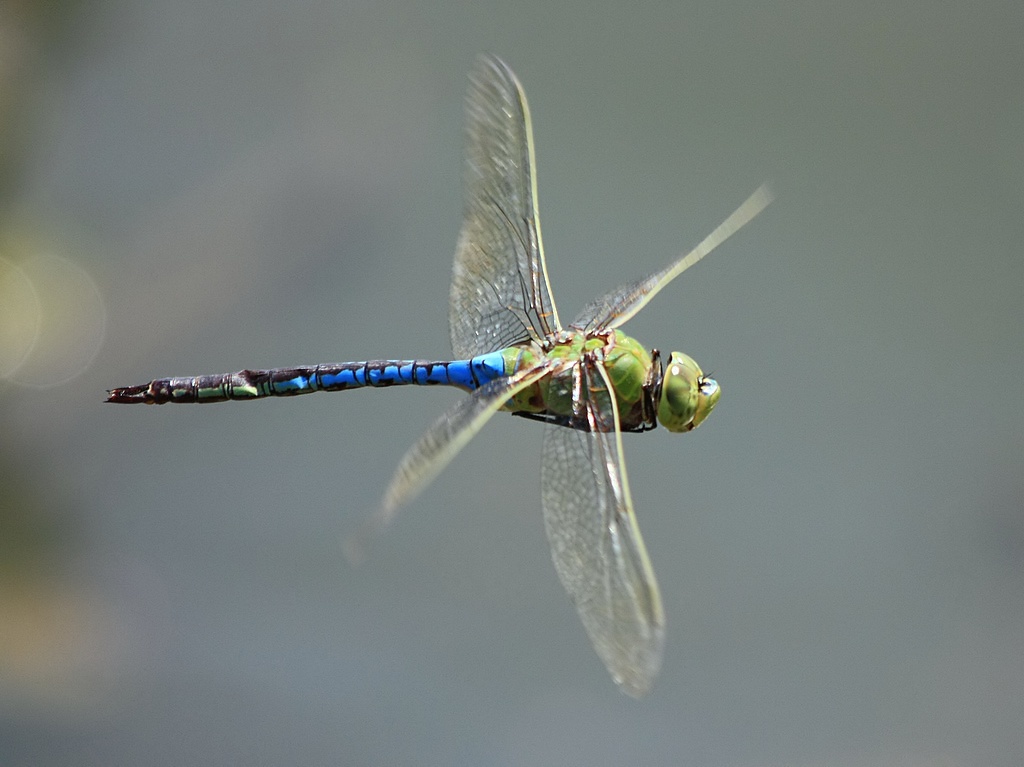
While migration may bring to mind geese in V-formation, these grand voyages are not reserved for birds alone. Many fish travel in seasonal hoards across oceans, while large mammals move in vast herds across the landscape. Even some snakes are known to migrate. These journeys are driven by a profound need: to find food, to reproduce, and to escape the extremes of weather.
The Common Green Darner’s Journey
Did you know that eighteen species of dragonfly migrate in North America? But the common green darner—a large and vibrant dragonfly—partakes in a migration that challenges our understanding of endurance in the insect world. Unlike the single-generation migration seen in many species, the green darner’s migration is a multigenerational odyssey that spans the entire continent.
Each year, this migration unfolds in three distinct waves: the first generation heads north in the spring, their offspring return south in the fall, and a third generation overwinters in the Caribbean, ready to restart the cycle come spring. Even with a wingspan of just 3 inches, these dragonflies can embark on an astonishing journey of up to 1,500 miles!
Hibernation: Surviving the Winter in Stillness
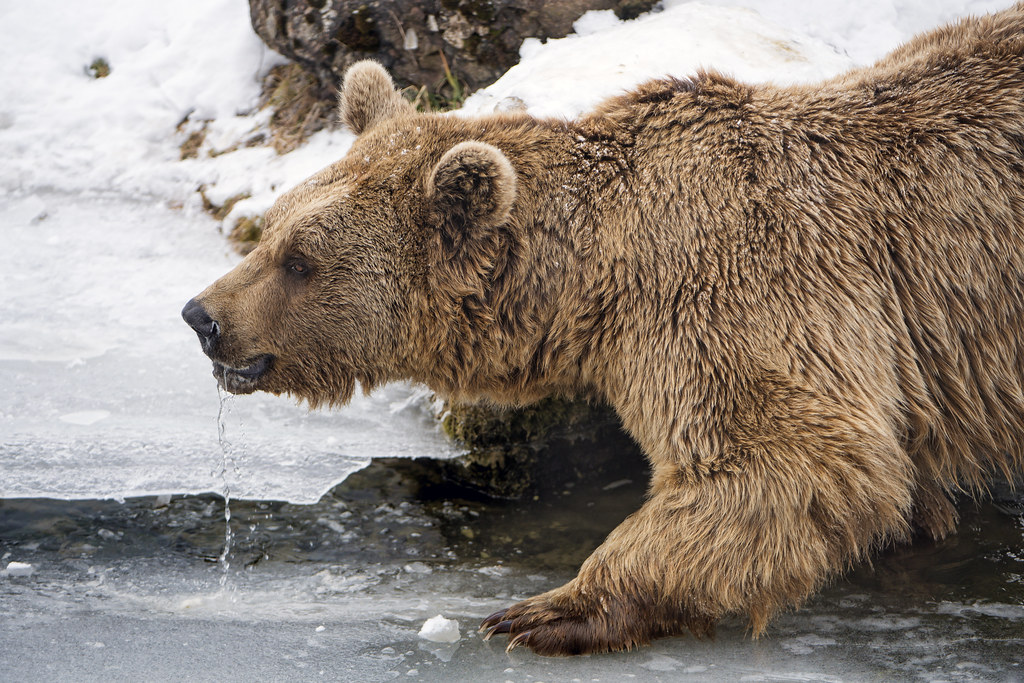
As the world outside frosts over and food becomes a rare sight, many creatures employ a remarkable strategy to weather the winter chill: hibernation. Hibernation is more than a long nap; it’s an intricate biological marvel that allows life to pause and play in rhythm with nature’s cycles. From the snug dens of bears to the hidden burrows of bats and ground squirrels, hibernation spans an array of animals.
The Brown Bear’s Retreat
Brown bears exhibit a unique form of this strategy known as ‘ursine hibernation.’ Unlike true hibernators whose body temperatures drop to near freezing, bears maintain a body temperature only slightly below their normal state. This allows them to wake more easily if disturbed or if the weather warms unexpectedly.
The hibernation cycle of brown bears is a marvel of adaptation. Typically beginning in October and potentially lasting until April, this period can vary based on local climate conditions. The full, year-long process is marked by several stages:
- Normal Activity: During the summer, bears with unlimited food will eat about 8,000 calories per day. That’s the equivalent of a human eating 27 cheeseburgers every day!
- Hyperphagia: In the lead-up to hibernation, brown bears enter a phase of hyperphagia, where they eat excessively to build up fat reserves. During this time, a bear can urinate 4 gallons of water and consume up to 20,000 calories a day — that’s 67 cheeseburgers!
- Hibernation: Throughout hibernation, the bear’s physiological processes are minimized. Heart rate drops from a normal rate of 40-70 beats per minute to as low as 8 beats per minute. Metabolic rate drops to just 2-5% of what most true hibernators experience, allowing the bear to process reserved fat extraordinarily slowly. Females can also give birth and nurse their cubs during this time.
- Walking Hibernation: As the bear emerges from hibernation in the spring, it experiences a period of low activity, where its metabolism gradually returns to normal levels. Initially, the bear eats less and remains near its den as it adjusts back to an active lifestyle.
Freezing: Cryogenic Sleep
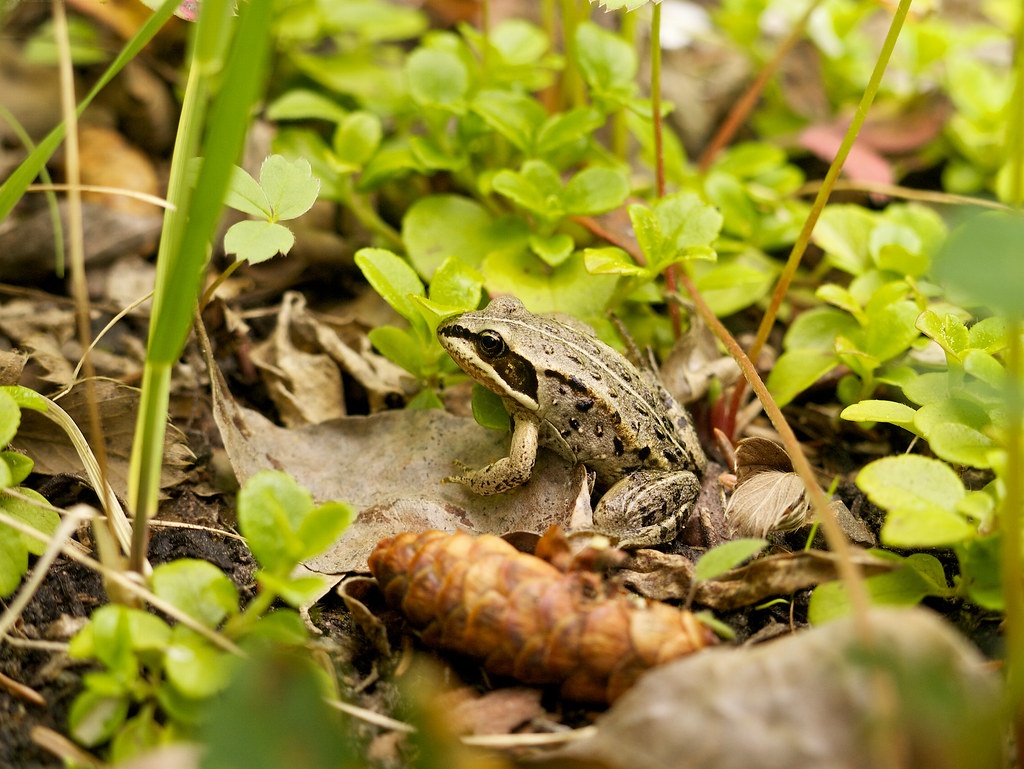
While many creatures retreat into the quiet slumber of hibernation to escape winter’s wrath, others embark on a survival journey that seems to defy the very essence of life. These are the masters of the deep freeze—a remarkable group that doesn’t just endure the cold but embraces it in the most literal sense. Unlike their hibernating cousins, these species lean into the chill, allowing their bodies to freeze solid, only to miraculously revive when the warmth of spring calls.
The Wood Frog’s Revival
The wood frog has mastered the art of cryogenics, allowing nearly 70% of its body water to freeze during the harsh winter months. As temperatures drop, the wood frog enters a state of suspended animation deeper even than hibernation: its heart stops beating, its blood stops flowing, and it ceases to breathe. Ice crystals form in the body cavity, beneath the skin, and in the fluid spaces around its cells. Even the lenses of their eyes freeze.
Once the environment warms, the frog’s body slowly thaws. Its heart starts beating again, and within a few hours to days, it returns to normal activity as if awakening from a deep sleep. This strategy allows the wood frog to inhabit regions further north than any other North American amphibian—even within the Arctic Circle.
Antifreeze: Defying the Ice

Although some animals embrace the cold and freeze solid during the winter, a few others use natural antifreeze compounds to prevent ice from forming entirely. When others lie in dormancy, this incredible adaptation allows these species to remain active during the winter.
The Arctic Cod’s Cold Conquest
The arctic cod has mastered the art of living in icy waters, thanks to its unique ability to produce antifreeze glycoproteins (AFGPs) in its blood. This adaptation prevents the formation of ice crystals within its entire body, allowing it to thrive in the frigid Arctic marine environment where temperatures often dip below the freezing point of freshwater.
The secret to the arctic cod’s survival lies in these glycoproteins, which bind to tiny ice crystals in the blood, inhibiting their growth and preventing them from becoming large enough to cause cellular damage. These proteins in effect lower the freezing point of the fish’s bodily fluids, allowing it to remain active in ocean waters as cold as 28.8 °F. Imagine swimming in below-freezing water!
Stockpiling: Hoarding for Survival
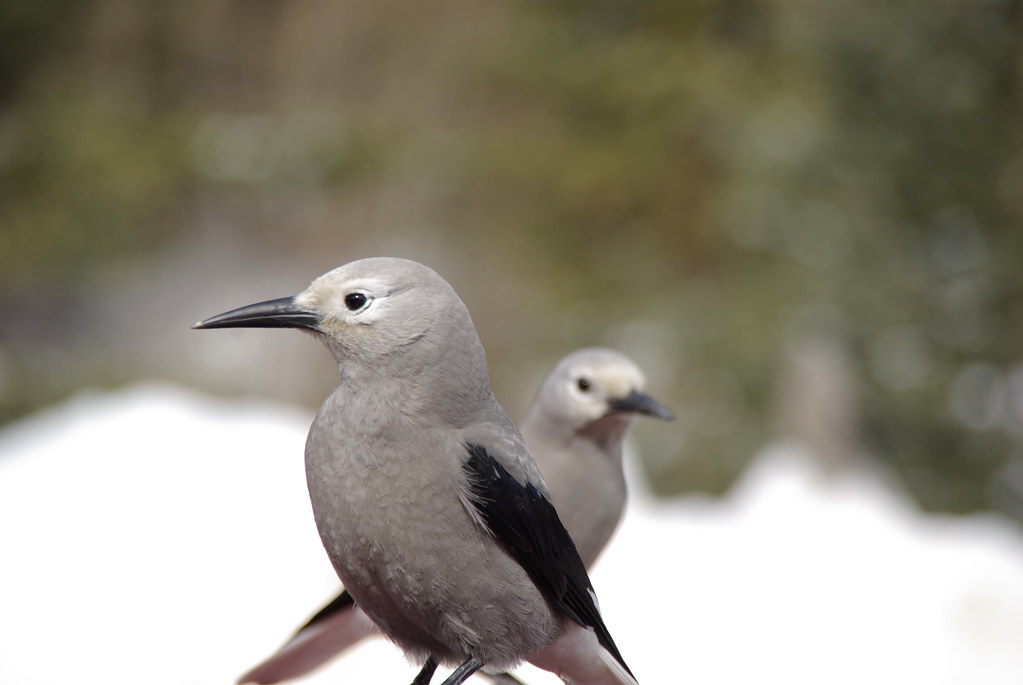
Stockpiling is nature’s way of setting the table for the cold months ahead. But stockpiling isn’t just about random fervent hoarding—as we’ll see, prepping the pantry requires a certain amount of cognitive mastery.
Squirrels gathering nuts, birds caching seeds, and even insects amassing food reserves highlight the widespread adoption of this strategy across the animal kingdom. These preparations allow them to weather the winter months without the constant need to expose themselves to the harsh elements and predators.
The Clark’s Nutcracker’s Winter Pantry
Perhaps the most impressive stockpiling species is the Clark’s nutcracker, a resident of mountainous regions in North America. This bird has evolved extraordinary spatial memory, caching tens of thousands of seeds during the autumn months to ensure a full stock in winter.
The Clark’s nutcracker’s stockpiling behavior is highly sophisticated. These birds don’t randomly cache their seeds; they engage in a methodical process, selecting optimal locations that will minimize the risk of theft by other animals and ensure the seeds’ preservation.
What truly sets the Clark’s nutcracker apart is its astonishing ability to remember the locations of thousands of the cache sites that had been scattered across the landscape months previous. This feat is made possible by the bird’s highly developed hippocampus, an area of the brain associated with memory and navigation. Studies have shown that Clark’s nutcrackers can manage and recall thousands of caches for up to a whopping nine months. They are even known to show preferences for the types of seeds they recover during the winter, factoring in both a cache’s age and its nutritional value when choosing a cache to plunder.
This level of planning, spatial memory, and selective retrieval showcases an unexpected depth of intelligence and adaptability. Far from a mere act of hoarding, stockpiling is a truly nuanced ballet of memory, strategy, and survival.
Building: Weatherproof Architecture
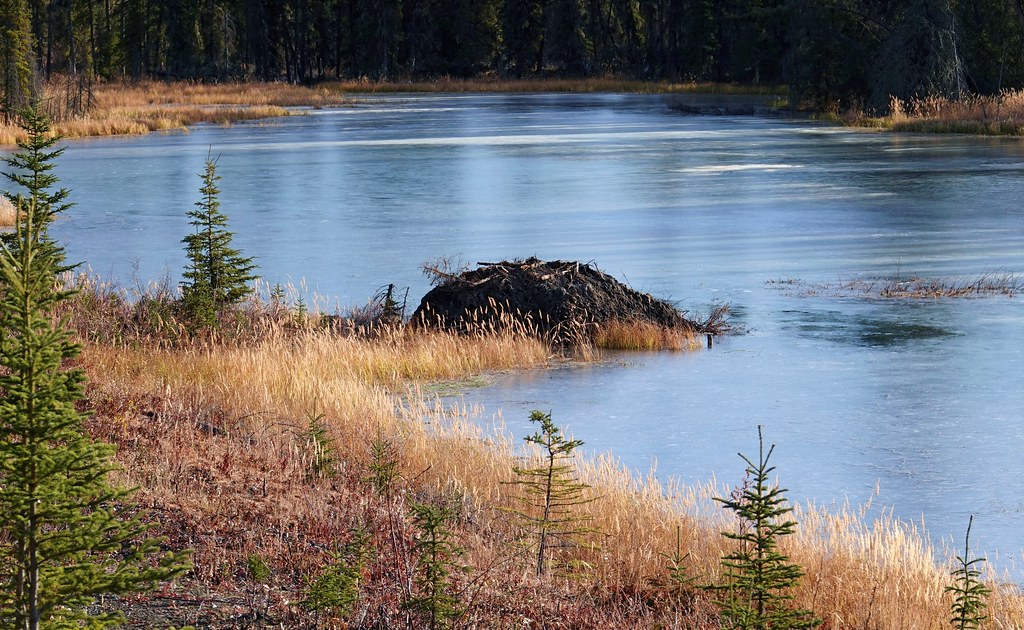
Constructing shelters provides refuge from the elements, a safe haven for raising young, and in some cases, a storeroom for food supplies during scarce times. This skill is not limited to a single species or habitat but is a widespread adaptation seen across diverse ecosystems. Termites construct towering mounds that regulate temperature and humidity, demonstrating an architectural prowess that rivals human engineering. Even spiders weave intricate webs not just for trapping prey, but also for shelter from the environment. These examples underscore a fundamental truth: the instinct to build is driven by the universal need for protection, comfort, and survival. Whether through weaving, excavating, or assembling, animals utilize the resources available to them in some very innovative ways.
The Beaver’s Lodge
Among the animal kingdom’s builders, beavers are truly unparalleled. In addition to dams, beavers will also build permanent homes—called ‘lodges’—marvels of natural engineering designed to withstand the harshness of winter. Constructed from an assortment of sticks, mud, and stones, beaver lodges are far more sophisticated than their exteriors might suggest. The size of these structures can be impressive, with lodges often exceeding 10 feet in width and capable of accommodating the adult pair, their kits, and sometimes yearlings from the previous year.
The interior of a lodge features a series of chambers that serve as living quarters for the family. These chambers are elevated above the water level, ensuring a dry and insulated environment that remains warm despite the freezing temperatures outside. Access is ingeniously designed through underwater entrances, which protect them from predators.
In larger bodies of water, where the depth naturally deters predators, beavers may construct their lodges on the bank. However, when they build in shallower, narrower streams, they often construct dams to create a pond around their lodge, artificially deepening the water to deter predators.
During the fall, beavers diligently forage for food and create a submerged cache of edible wood a few meters from their lodge. This cache, mostly underwater and accessible from the lodge, serves as their entire winter’s food supply. The beavers will not usually emerge to forage again until spring, living entirely within the lodge for up to 150 days per year.
Persistent Movement: Making Heat
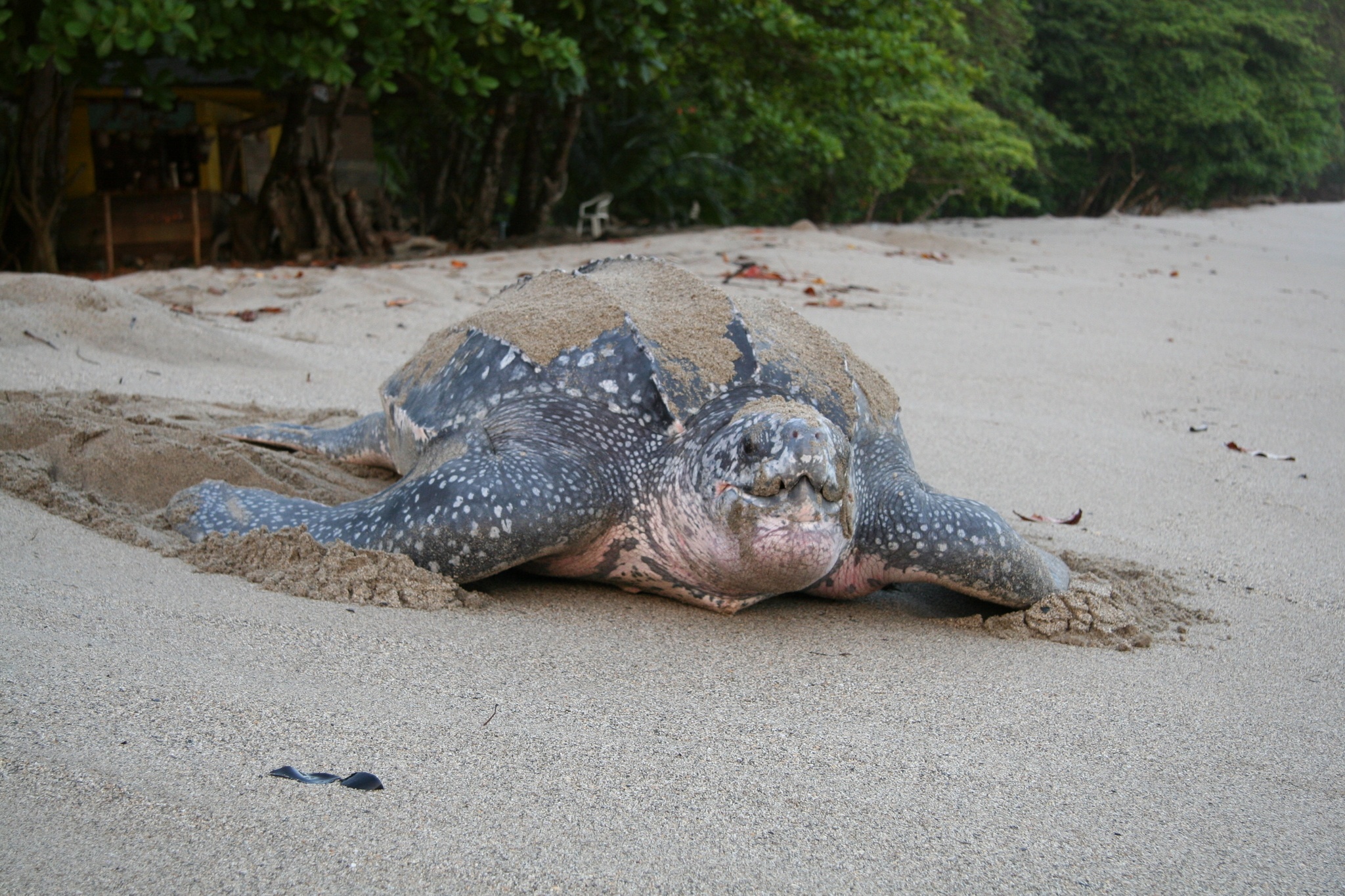
Unlike the stillness of hibernation or the shelter of meticulously constructed homes, some species opt for perpetual motion to navigate through the challenges of frigid environments. This approach involves constant physical activity to generate and maintain body heat. Among the most extraordinary examples of this strategy is the leatherback sea turtle, a creature whose lifestyle and physiological adaptations allow it to thrive in cold waters that would be inhospitable to others of its kind.
The Leatherback Sea Turtle’s Eternal Swim
The leatherback sea turtle can be found in a variety of marine environments, from the icy waters of the Arctic Circle all the way to the warmer currents of New Zealand. They possess the most extensive range of any reptile, and possibly of any vertebrate, largely due to their unique approach to regulating body temperature.
Unlike most reptiles, which are ectothermic (relying on external heat sources), leatherbacks exhibit a form of “semi-warm-bloodedness.” They do not generate heat through metabolic processes as mammals and birds do; instead, they utilize a method made famous by Finding Nemo’s Dory: just keep swimming.
Instead of circulating warm blood from the core to the extremities, as is common in warm-blooded animals, leatherbacks operate in reverse. They generate mechanical heat in their limbs and transport it inward. This unique system prevents their flippers from cooling too much during continuous swimming. It ensures their limbs remain functional, preventing hypothermia and enabling their extensive migratory patterns.
Research has shown that leatherbacks adjust their flipper stroke frequency in response to water temperature. In colder waters (<77 °F), they increase their movement to minimize heat loss, while in warmer waters (up to 88 °F), they reduce activity to shed excess heat. This ability allows leatherbacks to maintain an internal temperature of around 79 °F, a feat unmatched by any other reptile!
Defeating the Cold
These strategies—from suspended animation to non-stop movement—showcase not just the struggle to survive, but the drive to thrive under conditions that test the limits of life’s resilience. They remind us of the power of adaptation, the importance of persistence, and the marvel of life’s ability to find a way.
We invite you to consider: which strategy resonates most with you? Are you the type to shun the cold, seeking warmth alongside migratory dragonflies? Do you prepare meticulously for future hardships, akin to the stockpiling Clark’s nutcracker? Or perhaps you find strength in stillness, embracing a period of introspection and conservation of energy, much like a hibernating bear.
Whichever strategy speaks to you, let it inspire a deeper connection with the natural world and a greater appreciation for the resilience of wildlife. As we witness the incredible adaptability of these creatures, may we also find lessons for our own lives—lessons of endurance, innovation, and the enduring will to survive.























